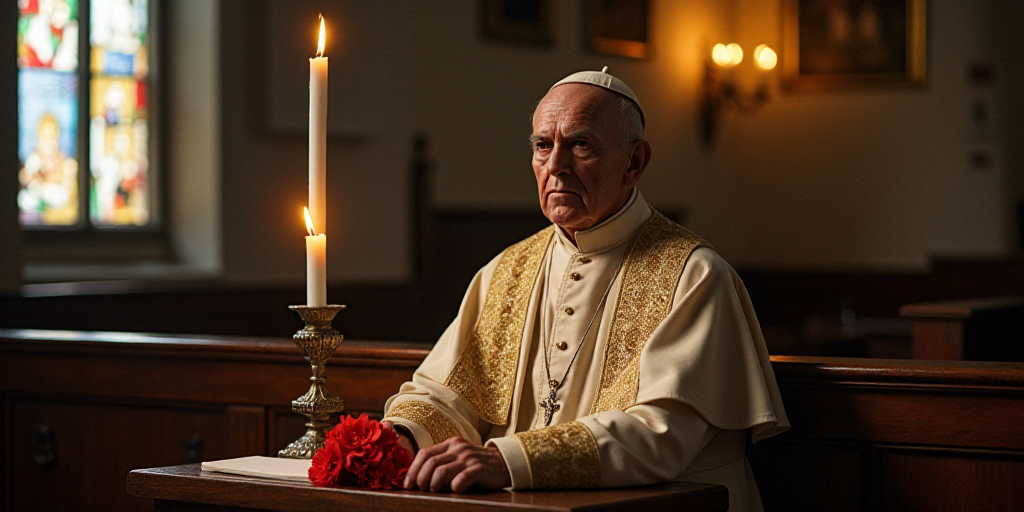Introduction
With the departure of Pope Francis, the 266th pope and the first Latin American Jesuit to lead the Catholic Church, a meticulous protocol of succession and funeral arrangements has commenced. This process involves several significant steps, including sealing the pope’s residence and fragmenting the Piscatorial Ring, a symbol of papal authority.
The Beginning of the Succession Protocol
Upon confirmation of Pope Francis’s passing, the doors to his residence in Santa Marta were sealed by Cardinal Kevin Joseph Farrell, the Camerlengo of the Vatican. Accompanied by Secretary of State Pietro Parolin and Archbishop Edgar Peña Parra, the head of the Vatican’s Cabinet, this marked the end of Francis’s papacy and the initiation of preparations for a conclave to elect the new leader of the Catholic Church worldwide.
Camerlengo Farrell’s Responsibilities
As the highest authority of the Holy See until the new pope is elected in the conclave, Camerlengo Farrell assumed his responsibilities. Among his first solemn duties was removing the late pope’s ring from his finger and breaking it, following a traditional ceremony to prevent any attempts at document forgery.
Modifications to Funeral Protocols by Pope Francis
Pope Francis had already modified the funeral protocols in 2024 through the Ordo Exsequiarum Romani Pontificis (Ritual for the Funerals of Roman Pontiffs). He eliminated protocols such as gradually placing his remains in three caskets, one of cypress with medals and coins, another of galvanized iron, and finally in a wooden urn to be transported to the Vatican Grottos.
Instead, his remains will be dressed in a white cassock with a red mozzetta (a type of cape), and then placed in a simple wooden coffin for transport to St. Peter’s Basilica for ritual ceremonies, without a bier or the papal staff during the mass.
A Different Resting Place
According to Vatican News, Pope Francis explained these changes because “the renewed rite should further emphasize that the funeral of the Roman Pontiff is that of a Christ’s shepherd and disciple, not a powerful worldly figure.”
The “Three Stations” remain, with the first being the confirmation of the pope’s death at his residence, followed by placing his remains in a wooden coffin for transport to St. Peter’s Basilica, presumably on Wednesday, for further funeral rites. Mourning lasts for nine days, during which the public can bid farewell to the late pope.
Burial Location
Unlike previous popes, Pope Francis’s remains will not be buried within the Vatican but in St. Mary Major Basilica, also in Rome, reflecting his deep devotion to the Virgin Mary. This decision marks a shift from the tradition of burying deceased Church leaders in their primary seat.
“I wish my final earthly journey to end precisely in this ancient Marian sanctuary where I prayed at the beginning and end of each apostolic journey (St. Mary Major Basilica)… I ask that my tomb be prepared in the niche in the side aisle between the Pauline and Sforza Chapels of the mentioned basilica,” Pope Francis stated in 2022.
Key Questions and Answers
- What is the Piscatorial Ring? The Piscatorial Ring, a symbol of papal authority, is made of solid gold with St. Peter’s image on a fishing boat. Upon a pope’s death, it must be broken by the Camerlengo as part of the funeral protocol.
- What changes did Pope Francis make to funeral protocols? Pope Francis modified the traditional funeral protocol, opting for a simpler wooden coffin and burial in St. Mary Major Basilica instead of the Vatican Grottos.
- Why did Pope Francis choose St. Mary Major Basilica for his burial? This decision reflects Pope Francis’s profound devotion to the Virgin Mary, as expressed in his 2022 statement.






